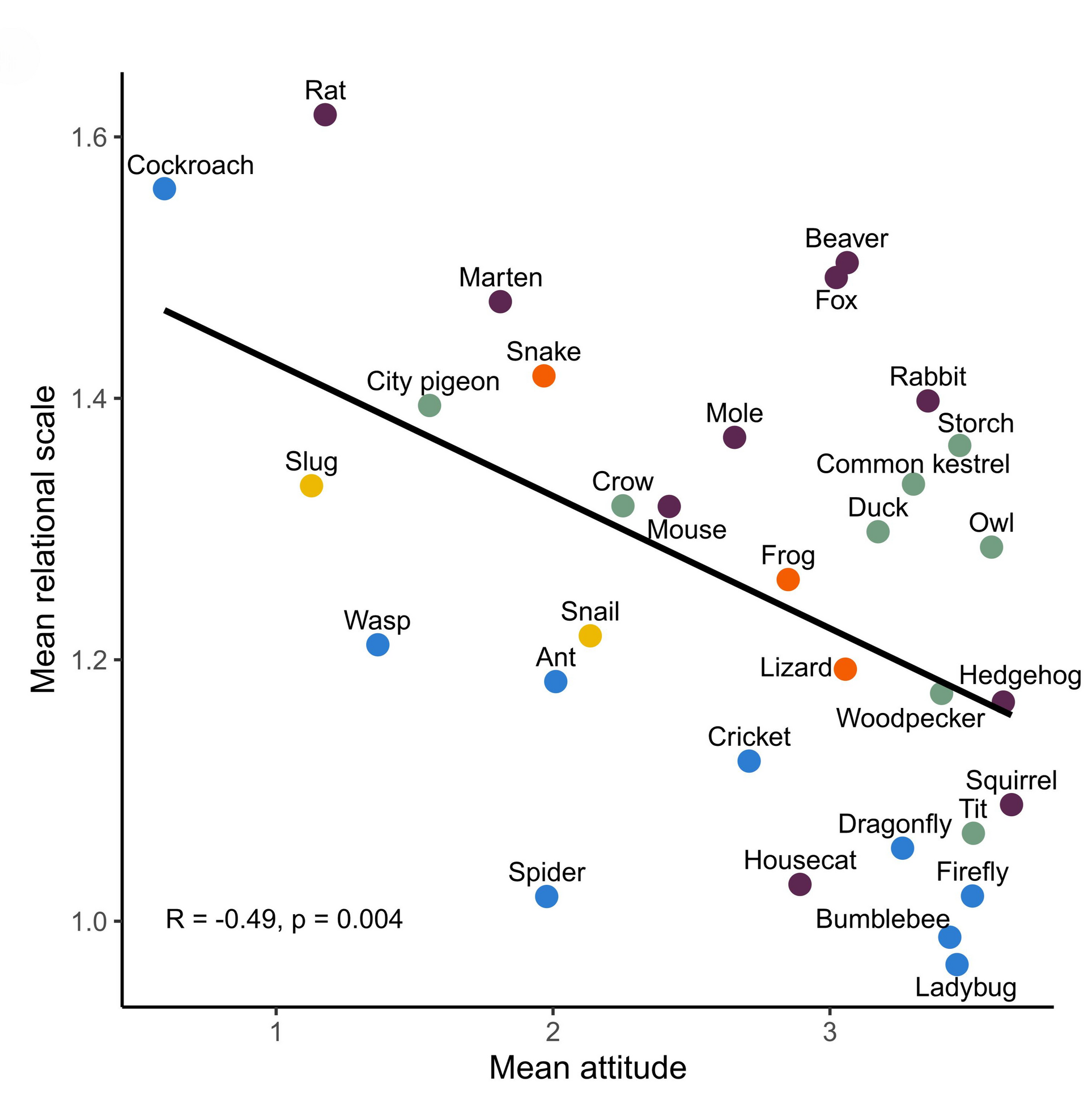Study on the acceptance of animals in urban environments
Where wildlife is welcome

The relationship between city inhabitants and urban animals is complex, as the study shows. The researchers conducted a survey to find out how Munich residents rate 32 urban animal species and where in the city they would prefer to see them. In general, respondents liked most of the animals. 23 of the 32 animal species received positive approval ratings. The majority of birds and mammals were very popular. The respondents also rated arthropods, lizards and frogs positively. Exceptions were martens, rats, wasps, slugs and urban pigeons. Cockroaches were the least popular. Respondents had a neutral attitude towards ants, spiders and snakes.
Acceptance depends on the animal and its location
According to the survey, all animals have a place in the city - except for the very few, very unpopular species. In the survey, city residents were able to choose from various locations in different proximity to their homes where the animals should be found.
In most cases, participants placed the animals in urban areas such as their neighborhood, city parks, in the city in general and in the surrounding countryside. In contrast, they rarely mentioned their immediate living environment, such as in the garden, on the balcony or in the apartment. Participants placed some animals, such as squirrels and ladybugs, in all or almost all locations. They placed many species in several locations, while three species were often not placed at all: Cockroaches, rats and slugs. "It turns out that city residents' preferences for locations clearly correlate with their attitudes towards animals," explains researcher Dr. Fabio Sweet. The animals that were generally more popular were on average placed closer to home by the respondents.
Planning cities for people and animals
Prof. Wolfgang Weisser, head of the Chair of Terrestrial Ecology, emphasizes: "Increasing urbanization makes it necessary to actively care for animals in the city and to design urban development accordingly. If we know where people prefer or dislike certain animals, we can anticipate potential points of conflict. This allows us to identify places where species conservation in cities is accepted by people." The results show, for example, that human-wildlife conflicts are unlikely in city parks because the animals are accepted by most people there. Animals are also tolerated in the wider residential environment. Conversely, wildlife protection in the immediate proximity of the living space, such as the balcony, could meet with resistance.
Measures to promote urban biodiversity are most successful when they are not only ecologically sensible but also socially acceptable. It is therefore necessary to combine knowledge about the way these animals live and people's acceptance of them. In this way, urban planning can simultaneously promote animal welfare in cities and avoid conflicts between humans and animals.
Fabio S T Sweet, Anne Mimet, Md Noor Ullah Shumon, Leonie P Schirra, Julia Schäffler, Sophia C Haubitz, Peter Noack, Thomas E Hauck, Wolfgang W Weisser, There is a place for every animal, but not in my back yard: a survey on attitudes towards urban animals and where people want them to live, Journal of Urban Ecology, Volume 10, Issue 1, 2024, juae006, https://doi.org/10.1093/jue/juae006
This research work was funded by the Bavarian State Ministry of Science and the Arts as part of the Bavarian Network for Climate Research (BAYKLIF) program in the Bavarian Synthesis Information Citizen Science Portal for Climate Research and Science Communication (BAYSICS) project.
Technical University of Munich
Corporate Communications Center
- Magdalena Eisenmann
- presse@tum.de
- Teamwebsite
Contacts to this article:
Dr. Fabio S. T. Sweet
fabio.sweet@tum.de
Prof. Dr. Wolfgang Weisser
wolfgang.weisser@tum.de
Technical University of Munich
Chair of Terrestrial Ecology


